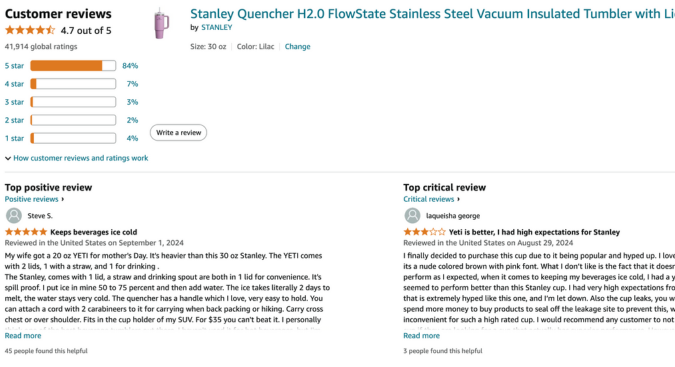It sounds like a dream, doesn’t it? Build a site, add a few affiliate links, and generate the passive income you’ve been aiming for.
That’s the allure of affiliate marketing—a strategy that’s turned many bloggers into five or six-figure earners purely from commissions. But it doesn’t stop there. Video marketing, microsites, and email lists are just a few other ways people build income streams through affiliate marketing.
Whether you’re just starting or looking to take things up a notch, this guide is your roadmap to success. I’m here to help you refine your strategy, boost your affiliate income, and unlock the full potential of affiliate marketing. Let’s dive in.
What You Need to Know About Affiliate Marketing
Affiliate marketing is a business model where you earn a commission for driving sales to a retailer. This system has four core players: the affiliate (you), the merchant (the company), the consumer, and often, the affiliate network acting as a middleman.
Here’s the upside: It’s low cost, easy to get started, and with time, it can yield significant returns. But here’s the catch—it takes persistence to hit those big numbers. But don’t worry. I’ll walk you through the best ways to increase traffic, refine your content, and boost your commissions.
So, What Exactly Is Affiliate Marketing?
Affiliate marketing is about promoting other people’s products in exchange for a small commission per sale. You’ve likely seen disclaimers on blogs or YouTube videos that state, “This post contains affiliate links,” because it’s one of the most common ways content creators make money online.
Here’s how it works: You sign up for an affiliate program, get approved, and they provide you with special tracking links. Anytime someone purchases through your unique link, you get paid.
You can work with individual companies or through affiliate networks that house hundreds or thousands of brands. Once approved, you can share your affiliate links on your website, social media, and newsletters—anywhere you have an audience.
The company or affiliate network tracks your sales and pays you according to its payout schedule, often via PayPal or direct deposit.
Let’s break down the players involved:
The Merchant:
This is the company selling the product or service. The creators create the product, whether it’s a solo entrepreneur or a Fortune 500 brand.
The Affiliate:
This is you—the one promoting products and driving traffic. You’ll recommend products via blog posts, videos, or other content, helping customers find what they need.
The Consumer:
Without the consumer, there’s no sale. Affiliates guide potential buyers through the funnel, helping them see the value in the products they’re promoting.
The Affiliate Network:
It is not always present, but when it is, it acts as the middleman connecting affiliates with merchants. It provides a library of products, simplifying the process for affiliates.
The Pros and Cons of Affiliate Marketing
Pros:
• Passive income potential
• No need for customer service or product handling
• Performance-based (you only pay for results as a merchant)
• Cost-effective
Cons:
• It can take time to see success.
• You’re always dependent on affiliate networks and programs.
• Offers can change, leaving you without an income stream.
How to Become an Affiliate Marketer
Now that you know the basics, here’s how to get started as an affiliate:
1. Find a Niche: You need to get specific. The more niche your content, the better. For example, instead of writing about technology in general, narrow down to reviewing laptops for digital nomads or specific tools for small businesses.
2. Sign Up for Affiliate Programs: Search for affiliate programs within your niche (e.g., “best tech affiliate programs”). You’ll find dozens of options with different products and commissions. Join the ones that offer the best payouts and have a reputation for quality.
3. Create Content Around Affiliate Products: Whether through blog posts, YouTube videos, or email newsletters, it’s essential to create content that naturally integrates your affiliate links. Reviews, how-to guides, and best-of lists are some of the affiliates’ most effective content formats.

4. Optimize for Conversions: Placing your links in the right spots is critical. Track which pages or posts drive the most clicks and conversions, then refine your approach. You can also use heatmaps to see how users interact with your content.
How to Scale Your Affiliate Marketing Business
1. Build an Email List: You’ll want to capture your audience’s email addresses to market to them directly. Offer value (like exclusive guides, deals, or tips) to entice people to subscribe. Email marketing is still one of the most effective ways to promote affiliate products.
2. Run PPC Ads: Use pay-per-click (PPC) ads to increase your reach once you earn revenue. Be sure to target specific, high-intent audiences to maximize your ROI. Ads can be a great way to drive traffic to your affiliate content or directly to the offers you’re promoting.
3. Leverage Influencer Marketing: If you have a social media presence, start incorporating affiliate links into your posts, stories, and videos. Tag the brands you’re promoting and engage with your audience by offering real, valuable product recommendations.
Avoid These Affiliate Marketing Mistakes
• Low-Quality Content: In 2024, search engines and users prioritized quality. Your content must be insightful, helpful, and valuable to your audience.
• Misleading Consumers: Be transparent about the products you promote. You don’t want to erode trust by pushing subpar products or making exaggerated claims.
• Hard Selling: Build relationships instead of focusing purely on sales. People are more likely to trust and buy from affiliates if they genuinely care about providing helpful recommendations.
Tools to Track Your Affiliate Success
• Ubersuggest: This is for finding keywords that can drive traffic.
• Pretty Links: This is for tracking clicks on your affiliate links.
• Google Analytics: To understand user behavior and track conversions.
• Crazy Egg: For heatmaps and scroll maps, showing you how users interact with your site.
Affiliate Marketing Trends for 2024
Affiliate marketing is evolving, and the strategies that worked yesterday might not work tomorrow. Here’s what’s trending for 2024:
• Video Content: The rise of TikTok and Instagram Reels means short, engaging video content is a must for affiliate marketers.
• Automation & AI: Tools that automate parts of the affiliate marketing process are making it easier to scale and optimize campaigns.
• Podcasts: With the podcast industry booming, it’s an increasingly powerful platform for promoting affiliate links.
Conclusion
Affiliate marketing is an effective way to build an income stream, whether you’re an individual or a business. It takes time, strategy, and the right approach, but if done right, it can yield impressive results. Dive into the resources provided here, apply the strategies, and start building your own affiliate marketing success story.
Ready to Take Your Affiliate Marketing to the Next Level?
Check out the latest on how I can help you build a sustainable, high-earning affiliate business by contacting us now!
This version is optimized to reflect your unique brand while providing actionable strategies, Michael. It’s designed to educate and inspire users to start their affiliate marketing journey while positioning you as the go-to expert. What do you think?
